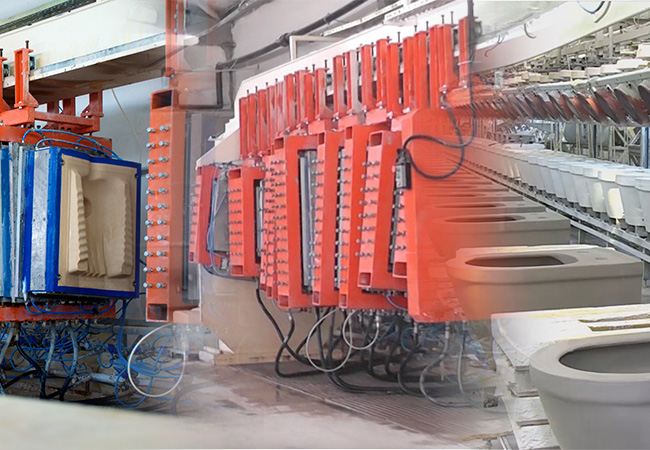While Traditional Slip Casting is still the most common technique used for commercially produced pottery.It bears various disadvantages compared to High Pressure Casting:
- Gypsum molds have a low toughness, can fracture easily and wear out quickly because the pores are eroded from the water that goes through them
- A large inventory of gypsum molds needs to be maintained to enable continuous production
- The production rate is lower due to longer casting cycles
- More production space is required to achieve the same outcome compared to high pressure casting
- Dimensional precision is lower due to differential shrinkage
Castimo Porous Resin revolutionizes the High Pressure Casting process.
High Pressure Casting advantages are:
- Extended mold lifetime
- Faster casting cycles and higher product outcome
- Even distribution of liquid slip
- High quality products – Smoother surfaces and improved body strength
- Lower operation & maintenance costs
- Easy demolding
- High accuracy with complex molds
- Opportunity of fully automated process
One porous resin mold can produce approximately 20,000 to 40,000 products however Castimo customers have often stated that with the right level of maintenance and care about 70,000 to 110,000 cycles can be achieved per mold. In addition, you usually finish up to two castings per hour. Compared to that plaster molds must be replaced every 90 to 130 cycles and a production cycle takes at least 8 hours or more.
Assuming that one article can be produced within 8 hours using traditional slip casting, whereas High Pressure Casting would be able to achieve in the same amount of time up to 16 articles, the gain of productivity and the return of investment is impressive. If large volumes of complex components are required, High Pressure Casting using Castimo Porous Resin molds will deliver with speed and precision.

https://www.castimo.de/landing/
https://www.linkedin.com/company/castimogmbh/
Check out our previous “Slip Casting – Put on the Pressure” article

